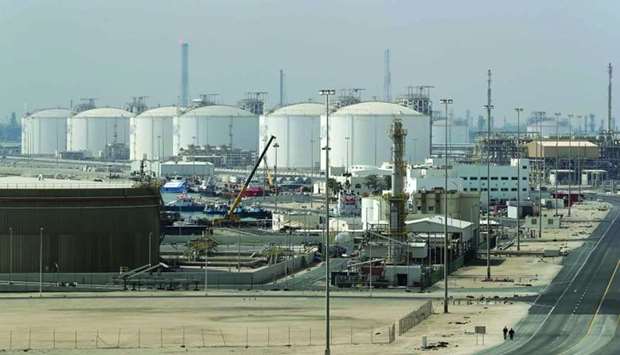Qatar to maintain its position as world’s largest LNG producer: NBK

With non-oil growth expected to taper as the government’s investment programme reaches an advanced phase, Qatar has turned back to gas/liquefied natural gas (LNG) production as it intends to maintain its position as the world’s largest LNG producer, according to NBK.
Non-oil growth is expected to taper with the government’s investment programme reaching an advanced phase; only four years remain for many of the high-profile infrastructure projects, such as the metro, light rail system and stadia, to be completed in time for the 2022 FIFA World Cup, it said in a report.
The $7.4bn Hamad Port, which Qatar plans to develop into a regional transport hub and with which Doha hopes to bypass trade sanctions, was officially inaugurated at the end of 2017, leaving only a handful of projects left for the authorities to eke out future output gains, it said.
“Attention, therefore, has turned back to gas/LNG production,” NBK said, adding in the short term, the delayed 1.4bn cubic feet per day Barzan gas facility should finally come on line in the fourth quarter of 2018, supplying additional volumes of gas and condensates; while in the medium term, Qatar’s intention to expand liquefaction capacity by 30% to 100mn tonnes per annum will significantly boost growth in the hydrocarbon sector.
Qatar’s economic growth is expected to edge up slightly in 2018 to 1.7%, following last year’s growth of 1.5%, before accelerating to 2.2% in 2019.
The economic activity will benefit from output gains in both the hydrocarbon (+0.3%) and non-hydrocarbon sectors (+3.3%), with the former witnessing an expansion in crude and LNG production and the latter benefitting from the government’s $200bn infrastructure spending programme.
Qatar’s public finances appear to be on a sound footing following the government’s fiscal consolidation efforts (cuts to subsidies, merging of ministries etc.), which brought public expenditures down by 12% in 2017, and the rise in oil and gas prices, it said.
“The fiscal deficit should continue to narrow to 1.2% of GDP (gross domestic product) by 2019, helped by firmer energy prices and additional non-hydrocarbon revenue streams, such as value added tax,” it said.
The deficit has been financed primarily by domestic debt, although Qatar returned to the international bond markets in April with a successful $12bn bond sale.
Meanwhile, Qatar Central Bank’s international reserves appear to have recovered to $24.7bn in May; around $20bn was tapped in 2017 to stem the capital outflows.
NBK said public debt is expected to peak at 57.8% of GDP this year, before falling to 54.3% of GDP in 2019.